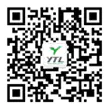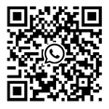In daily life, the electric meter is a familiar yet often overlooked device around us. It silently records the electricity consumption of our households, playing a crucial role in our rational use of electricity and management of electricity bills. Below, we will introduce some practical electric meter knowledge in detail.
I. Analysis of the Working Principle
The electric meter is essentially a precision instrument for measuring electrical energy. Currently, the widely used electronic electric meters utilize electromagnetic induction and microelectronics technology to achieve electrical energy metering. When current passes through the electric meter, the current transformer reduces the large current proportionally, and the voltage transformer lowers the high voltage. These converted current and voltage signals are transmitted to the microprocessor inside the electric meter. The microprocessor accurately calculates the product of the voltage and current based on these signals and integrates over time to finally obtain the value of electrical energy consumed over a certain period. It can be said that the electric meter is like an untiring accountant, precisely recording the whereabouts of every kilowatt-hour of electricity.
II. Interpretation of Common Types
- Single-phase Electric Meter: The single-phase electric meter is a common presence in residential households and is suitable for single-phase AC circuits of 220V. It is mainly responsible for measuring the total electricity consumption of various common electrical appliances in the home, such as lighting fixtures, televisions, refrigerators, air conditioners, etc. This type of electric meter is relatively small in appearance, and its installation and wiring are relatively simple. Usually, only two wires need to be connected, one live wire and one neutral wire.
- Three-phase Electric Meter: In places with high-power electricity consumption, such as factories, large shopping malls, and office buildings, the three-phase electric meter plays an important role. Since these places use three-phase alternating current of 380V, the three-phase electric meter can simultaneously measure the electricity consumption of the three live wires. Compared with the single-phase electric meter, the three-phase electric meter is larger in size, and its wiring is more complex, requiring the connection of three live wires and one neutral wire. It can meet the metering requirements for the stable operation of high-power equipment and ensure the accurate recording of electrical power data for industrial production and commercial operations.
III. Guide to Reading the Meter
- Traditional Mechanical Electric Meter: On the dial of the traditional mechanical electric meter, there is a row of digital rollers, which represent the units digit, tens digit, hundreds digit, thousands digit, etc. from right to left. When reading the meter, directly read the combination of numbers displayed on the rollers, which is the cumulative electricity consumption of the current electric meter. For example, if the number displayed is 01234, it means that the electric meter has cumulatively recorded 1234 kilowatt-hours of electricity. It should be noted that the last digit of some mechanical electric meters may be a decimal place, which is generally indicated by a red roller or differentiated from other digits, and should be identified carefully when reading.
- Smart Electric Meter: The smart electric meter, with its convenient reading method and rich functions, has become a new favorite in modern households and enterprises. It is equipped with a liquid crystal display screen that can clearly display the current electricity consumption directly on the screen. Moreover, many smart electric meters have the function of time-of-use billing and can separately display the electricity consumption during peak hours (electricity consumption during peak electricity usage periods) and off-peak hours (electricity consumption during off-peak electricity usage periods). By understanding the electricity consumption in different time periods, users can reasonably adjust their electricity usage habits, use high-power electrical appliances more during off-peak hours, and thus reduce electricity expenses. In addition, the smart electric meter supports remote meter reading. The power supply department can obtain the real-time electricity consumption data of users through the network without the need to visit the site, greatly improving the efficiency and accuracy of meter reading.
IV. Energy-saving Tips
- Pay Attention to the Meter Reading: Regularly check the reading of the electric meter to understand the electricity consumption trend of your household or enterprise. By comparing the readings in different time periods, you can detect whether there are any abnormal electricity consumption situations and promptly check whether electrical equipment has problems such as leakage or standby power consumption.
- Use Electrical Appliances Reasonably: Develop good electricity usage habits in daily life. For example, when an electrical appliance is not in use, turn off its power completely to avoid standby power consumption for a long time; set the air conditioner temperature reasonably. In summer, raise the temperature by 1-2°C, and in winter, lower the temperature by 1-2°C, which can not only save electrical energy but also not affect the comfort level; choose electrical appliances with appropriate power according to actual needs to avoid energy waste caused by "using a sledgehammer to crack a nut".
- Take Advantage of Time-of-use Electricity Prices: If the time-of-use electricity price policy is implemented in your area, you can make full use of the low-price electricity during off-peak hours. Turn on high-power electrical appliances such as electric water heaters, washing machines, and dishwashers during off-peak hours, which can effectively reduce electricity costs. At the same time, it is advisable to reduce unnecessary electricity consumption during peak hours, especially the use of high-energy-consuming equipment, so as to achieve off-peak electricity consumption and save electricity expenses.

 English
English 简体中文
简体中文







.png?imageView2/2/w/500/h/500/format/png/q/100)






